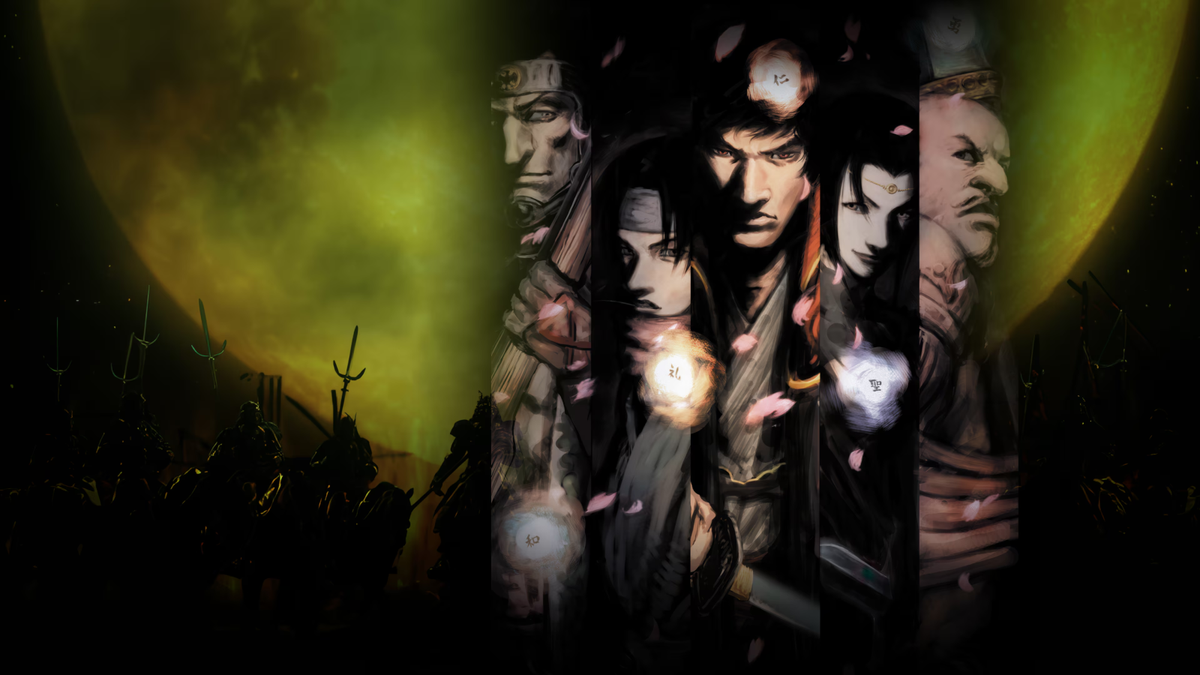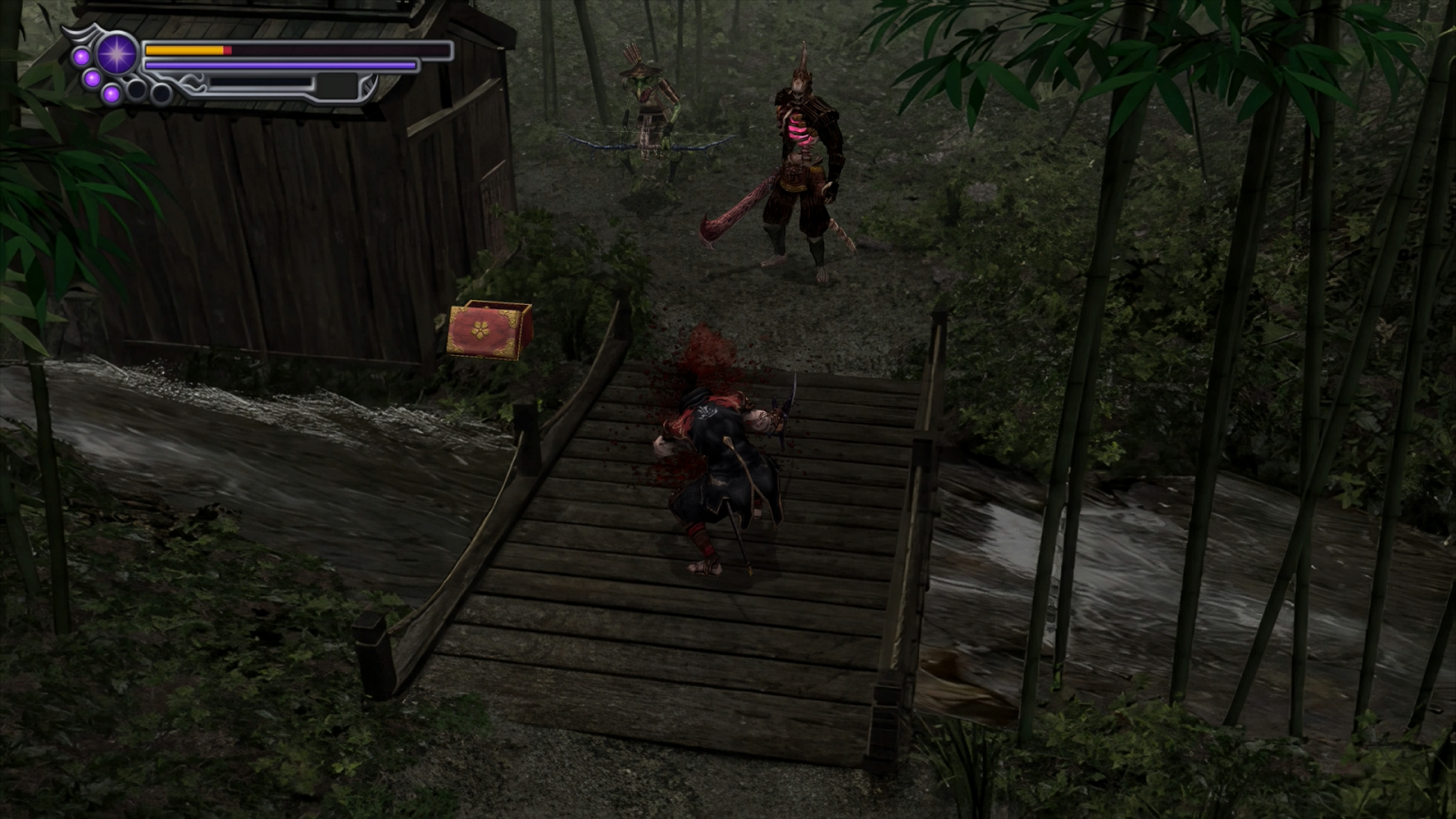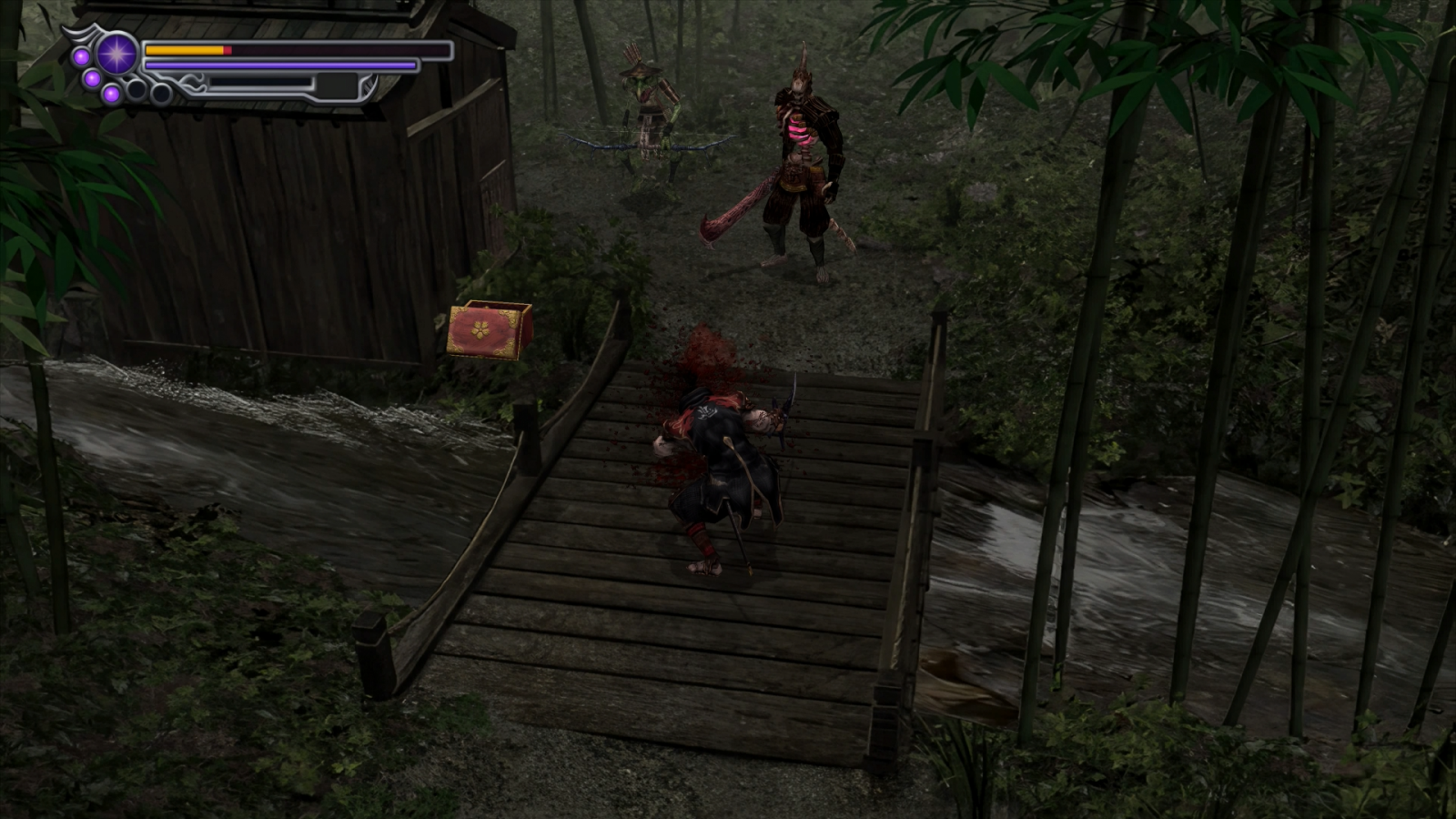
Demons have resurrected the most infamous Japanese warlord of all time. As they rampage through the land, one man must step up to avenge his village and topple the evil warlord who will stop at nothing to conquer all of Japan. Onimusha 2: Samurai’s Destiny, has been beloved since its initial release over two decades ago. Can a remaster keep this classic relevant, or should it have been buried along with Nobunaga?

When he comes home from his travels, Jubei finds Yagyu, his home village, completely ravaged. Homes burn and corpses litter the streets. Even worse, demonic swordsmen and zombified samurai still roam the town. After hearing a mysterious voice and making his way to a cave, our hero learns he has the power to absorb demonic souls. With this knowledge in tow, he sets out to find five sacred orbs and kill the relentless daimyo leading the malevolent army. With help from a few unexpected friends and a little bit of magic, anything could be possible.
Despite hamfisted writing and terrible voice delivery, I found Onimusha 2’s story to be a fun ride. Each beat has Jubei exploration locations, dispatching hordes of demons as he solves puzzles and, ultimately, takes on some sort of boss. Along the way, he can find items to curry favor with a handful of cast members who can fight alongside our hero at key moments. Much to my surprise, this is actually a notable mechanic with the game’s storytelling and replayability, so be sure to focus on giving gifts relevant to the character(s) you like. At each major plot point, you’ll typically fight a boss. Toppling said foe will earn you one of those sacred orbs along with expanded powers, new weapons, and new locations to explore.

The story feels like a B-tier experience, but in a good way. Jubei’s supporting cast is a patchwork of tropey members. Given the era the game was originally released, it should come as no surprise that the story gives the same vibes as Big Trouble in Little China. There are basic goons every hero should beat, no questions asked. From there, you’ve got the main protagonist’s underlings - powerful in their own right but packed with quirks that make them feel like second-rate comedic relief. Good comparisons could include Bebop and Rocksteady in Teenage Mutant Ninja Turtles or Goldar in Power Rangers. They’re endearing and offer fun challenges. Beyond the underlings, you’ll end up facing off against some truly brutal foes meant to push you to your limit. It’s kitschy, yes, but an experience that was still a joy to play through.

From a gameplay perspective, Onimusha 2: Samurai’s Destiny maintains the third-person movement and interaction mechanics that classic Resident Evil games popularized, while bringing the focus more into melee combat with tight timing and counterstrikes. As should be the case, weapon variety and combat feel much smoother than what we got with Onimusha: Warlords. The original game’s core is still here, so static camera angles still direct your movement. This isn’t normally a big deal, but it can be maddening when you’re trying to orient yourself in the middle of an intense boss fight.
You will need to become proficient at blocking, parrying, and counterstriking. Doing so gives you a quick way to eliminate enemies but, more importantly, provides health boosts as you play. My first time playing through the game, I just hacked my way to the final boss and had no healing items. After doing some digging, I decided, unfortunately, that the best course of action was a complete restart. With a focus on parrying and item conservation, I was able to get through the entire game with some healing items left over. Unfortunately, that meant I had to eat about ~8 hours of time. Thankfully, everything went quicker on my second playthrough. It was a bit of a gut punch for me, though, so hopefully this warning saves others from the same fate.

To the remaster’s credit, there are some substantial quality of life improvements (as I mentioned in my preview coverage). You can swap weapons on the fly instead of needing to dive through a bunch of menus. The game now also has autosaving and allows players to skip cutscenes. They’ve also added an Easy difficulty for people who just want to enjoy the story or, conversely, a Hell difficulty that has you die when you’re hit for those wanting a serious challenge.
Visually, Onimusha 2: Samurai’s Destiny is an excellent-looking update. Models look sharp, colors are vibrant, and the game runs well. Everything’s been updated for a 16:9 aspect ratio. Barring the decision to have everything driven by multiple camera angles, I love this update’s aesthetics. That said, the voice acting is still laughably bad. If the rest of the game weren’t so much fun, I’d probably have a real problem with it. As it stands, it contributes to that kitschy late 80s/early 90s action movie vibe.
Onimusha 2: Samurai's Destiny
Great
Onimusha 2: Samurai's Destiny is a lot of fun. The HD update looks fantastic, while the classic gameplay remains intact. There are some solid quality-of-life updates added that fans are sure to enjoy. The enemy and boss designs are great, and the ensemble cast keeps things interesting. For better or worse, the gameplay is still totally on the classic end and, while most burrs have been buffed out, a few snags may remain for newcomers. This remaster is responsible for winning me over to the Onimusha franchise, and I hope more folks feel the same.
Pros
- Great remaster with some solid quality of life improvements
- Looks fantastic for a PlayStation 2 game
- Fun, kitschy cast and narrative
Cons
- Terrible voice acting (that’s also bizarrely kind of endearing)
- Possible to reach the end-game with no viable way to win if you overuse healing items
This review is based on an early PS5 copy provided by the publisher. Onimusha 2: Samurai's Destiny comes out on May 22, 2025.
